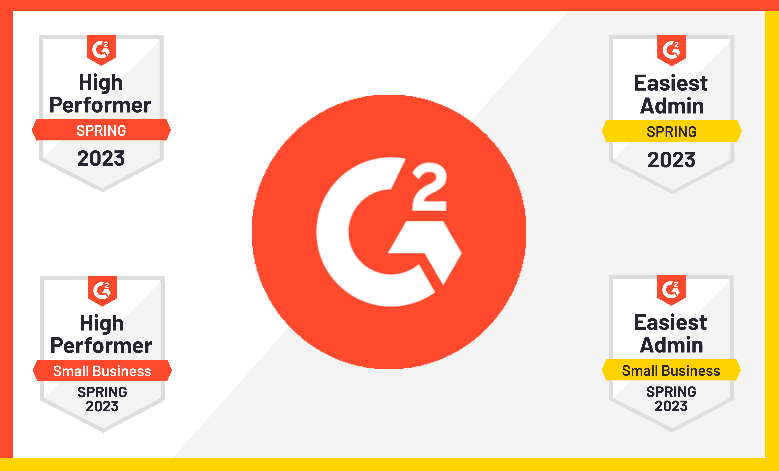Tabs3 Practice Management Blog for Law Firms
Unlocking the Benefits of Client Loyalty in the Legal Field through Engagement
In the dynamic and competitive landscape of the legal industry, law firms need to develop strong relationships with their clients from day one.
To do this, firms of all sizes must prioritize client engagement. Client engagement goes beyond simply ensuring client satisfaction and securing repeat business; it’s about fostering a sense of loyalty and trust that can lead to referrals and a strong reputation in the market.
There are many ways to keep your clients engaged throughout the lifecycle of their legal matters, including:
- Providing helpful information through blogs, videos, and podcasts
- Implementing drip email campaigns
- Using client collaboration tools
- Improving the payment experience
Legal technology tools can also help with all of these activities. Let’s look at some practical insights into keeping your current clients engaged and loyal to your practice.
Building client engagement: from trust to referrals
In any industry, client loyalty is more than just nice to have; it’s a crucial element to ensure success for your business.
But why is client loyalty so crucial for law firms, and how does it tie into client engagement?
Loyal clients are more likely to return for additional services. In a field as complex as law, where matters can span months or even years, having clients who trust your expertise and choose to stick with your firm is a significant advantage. They represent more than just the immediate business they bring but also the potential for future stability.
Loyal clients are also more likely to sing your praises. In many cases, they act like ambassadors for your firm by referring you to their friends, family, and professional networks, effectively becoming a free marketing channel. In an industry where word-of-mouth recommendations are invaluable, this can be a powerful tool for growth.
Of course, client loyalty takes time to develop. It’s the result of consistent, meaningful interactions that make clients feel valued and understood. It’s about showing clients that you’re not just there for them in the courtroom or during negotiations but also in the quieter moments when they seek advice or reassurance.
This is where client engagement comes into play. By providing your clients with valuable information, maintaining regular contact, and making their communication with your firm as seamless as possible, you can foster a sense of loyalty that goes beyond a single case or transaction.
Legal-specific software solutions can support these efforts, making it far easier to manage client relationships and keep communication personalized without requiring a huge mental load for attorneys and law office staff.
Providing value beyond the case: four strategies to foster client engagement and loyalty
Maintaining a strong connection with your current clients is crucial in the legal industry. Here are some effective strategies that can help you keep your clients engaged and foster a sense of loyalty:
1. Deliver information that matters
One of the most effective ways to keep your clients engaged is by continuously serving as a source of valuable information. Your firm can achieve active client engagement by:
- Crafting relevant articles that are easy to read and share
- Creating engaging videos
- Hosting (or being a guest speaker on) informative podcasts
By sharing insights and knowledge about the legal issues that matter to them, you keep them informed and position your firm as a trusted resource.
2. Implement drip email campaigns
Regular and personalized communication is vital to keeping clients engaged. Implementing drip email campaigns, where a series of emails are sent over time, can help maintain a consistent line of communication. These emails can include updates about their case, legal tips, or even general law firm newsletters.
Use marketing automation tools within a legal-specific CRM to streamline this process, ensuring consistent communication without adding to your workload.
3. Keep matters organized
Efficient and organized matter management is crucial for achieving client satisfaction and engagement at your law firm. Clients have greater confidence in your firm when they see their cases handled systematically and professionally. This includes everything from responding to client queries promptly, informing them about their case progress, and ensuring all their documents are organized and easily accessible.
Tabs3 Software solutions allow you to streamline matter management by organizing client information, automating routine tasks, and making all client documents easily accessible.
4. Offer easy payment options
In business, convenience is vital. Easy payment options like online payments or credit card processing can enhance the client experience. Tabs3Pay gives clients convenient payment options such as payments through a private portal, making it easier to settle their bills and demonstrating your firm’s commitment to modern, client-centric practices.
By integrating these strategies, you can keep your current clients engaged, fostering a sense of loyalty that can benefit your firm in the long run.
Keep your clients engaged and turn them into loyal ambassadors with Tabs3 CRM
At a time when consumers have an abundance of options at their fingertips, law firms are increasingly seeking to go above and beyond to deliver client engagement experiences that truly set them apart from the crowd.
By leveraging the capabilities of Tabs3 CRM, you can automate and simplify your client management procedures, enabling you to concentrate on the most crucial aspect of your work: delivering outstanding legal services, maximizing your billable hours, and keeping clients engaged throughout the matter lifecycle.
Tabs3 CRM is more than just a tool; it’s a partner that can help transform your practice by boosting client engagement and more.
Experience the transformative power of automation in managing and expanding your law practice by scheduling a demo or signing up for a free trial today.
Read More
July 20, 2023
All Products
Why Your Clients Will Love Tabs3Pay
As a law firm, you’re not just offering legal services; you’re providing a holistic experience that begins the moment a client walks through your door and continues well beyond the resolution of their case. One crucial aspect of this experience that’s often overlooked is the payment process. In an era in which digital transactions are the norm, clients expect and appreciate the ability to make payments quickly and conveniently. They value transparency in their transactions and trust that their sensitive information will be handled with utmost security. With a legal software solution, you can meet and exceed these expectations, strengthening your client relationships and setting your firm apart in a crowded marketplace. Whether it’s the ease of secure online payments, the flexibility of mobile optimization, or the reassurance of automated payment reminders, Tabs3Pay has a host of benefits that your clients will love.
The role of payment convenience in client satisfaction
In today’s on-demand world, convenience is king. Clients are no longer satisfied with outdated payment methods that require them to physically visit your office or mail a check. They want to settle their bills quickly and efficiently. This is where Tabs3Pay shines.
Secure online payments
With a legal credit card processing solution, your clients can pay their bills anytime, anywhere. This is particularly beneficial for clients who are unable to visit your office in person. With a few clicks, they can settle their accounts from the comfort of their homes, on the road, or anywhere in between. Online payments are not just about convenience; they also provide a critical layer of security. Clients can rest assured that their sensitive financial information is protected by gold-standard security measures to reduce the risk of fraud or theft. Tabs3Pay offers secure online payments that are compliant with the Payment Card Industry Data Security Standard (PCI DSS), which offers an exceptional level of security and safeguards credit card information against fraud and data breaches.
Mobile optimization
The ability to pay for goods and services via a smartphone or tablet is expected in today’s mobile-first culture. Tabs3Pay is mobile-optimized, providing a seamless and user-friendly experience on all devices. Your clients can easily view their bills, make payments, and receive instant confirmation of their transactions, all from their mobile devices. This feature is particularly beneficial for tech-savvy clients who prefer to manage their finances digitally. By offering a payment solution that aligns with your clients’ lifestyles and preferences, you make their lives easier and show that you understand and cater to their needs. This can significantly enhance their overall experience with your firm and foster long-term loyalty. It can also help you build trust, an essential ingredient in great legal service.
Building client trust through payment transparency
Trust is the cornerstone of any attorney-client relationship. Clients entrust you with their sensitive information, and in return, they expect honesty, integrity, and transparency. This extends to all aspects of your services, including the payment process.
Surcharging
One of the standout features of Tabs3Pay is surcharging. This service allows your firm to pass on the expense of credit card processing fees to the cardholder. While this might seem like a minor detail, it plays a significant role in promoting transparency. With surcharging, clients can see exactly what they are being charged for. There are no hidden fees or unexpected charges. Everything is laid out clearly, which can enhance trust and satisfaction. Clients appreciate knowing where their money is going, and this level of transparency can set your firm apart.
Automated payment schedules
Another feature that promotes transparency is scheduling automated payments with your clients. With Tabs3Pay, you can schedule payments to automatically process on a specified day of the month or on a one-time basis. This is not only convenient for your client, but makes it easy for your client to know when their payments will process. Scheduled payments also provide a clear record of payment and amounts, which can be helpful for clients who like to keep track of their finances. By keeping your clients informed and up-to-date, you show them that you respect their time and financial obligations, bolstering their trust in your firm.
Enhance the client experience
Legal-specific software solutions are designed to streamline your practice and enhance your clients’ overall experience with your firm. Look for the tool that can do the most for your clients. Tabs3Pay isn’t just a payment processor; it’s a solution that offers a range of convenient features that can help you meet and exceed your clients’ expectations.
Trust account support
For clients who have funds in trust with your firm, the proper handling of these funds is a matter of significant concern. Tabs3Pay is designed with trust accounting in mind, offering a feature that separates earned and unearned fees to ensure that trusts are handled correctly in accordance with legal and ethical standards. It’s another way that Tabs3Pay promotes transparency and builds trust between your firm and your clients.
Secure payment link
These days, law firms can offer clients the option to pay their bill safely and securely via a link included with their emailed statement. The Tabs3 Payment Link feature makes it easy for clients to settle their accounts, reducing the potential for confusion or misunderstandings about billing. Once a payment is made, you can import it directly into Tabs3 Billing. This seamless integration saves time for your firm and ensures that your clients’ payments are processed and recorded accurately.
Seamless integration
Tabs3Pay’s strength lies in its seamless integration with other Tabs3 products, providing a unified, efficient experience for both law firms and clients. Consolidate your tech stack with:
Tabs3Pay syncs with other Tabs3 products to provide a comprehensive solution for managing law firm finances and payments, enhancing the client experience with a smooth, easy-to-use payment process.
Improve client satisfaction with Tabs3Pay
In the increasingly competitive legal field, providing an exceptional client experience is more than just nice to have. It’s a necessity. By adopting Tabs3Pay, you’re not just improving your payment process but also enhancing your clients’ overall experience with your firm. You’re showing your clients that you understand their needs and are committed to meeting them. And in doing so, you build stronger, more trusting relationships that can lead to increased client satisfaction, loyalty, and ultimately, greater success for your firm. Ready to see how Tabs3Pay can transform your clients’ experience? Schedule a demo or sign up for a free trial today and see the difference it can make.
Read More
July 13, 2023
Tabs3 Billing
Trust Accounting
Integrate Your Accounting for a Stress-Free Summer
As the sun shines brighter and the days grow longer, the promise of summer brings the allure of vacations, barbecues, and a much-needed break from the daily grind.
For many legal professionals, though, the thought of stepping away from the office can be anxiety-inducing. Will critical tasks fall through the cracks? Will billing and payments continue to run smoothly? Will cash flow be affected because important operational tasks fell by the wayside?
Rest assured: taking a summer vacation doesn’t have to lead to administrative chaos at your law firm. The solution to a smooth, stress-free summer lies in integrated billing and accounting software.
The power of integration
When your billing and payment processes exist outside your practice management software, you’re forced to jump between systems, wasting valuable time and increasing the risk of errors and oversights.
With integrated software, though, you can streamline your operations so that everything runs like clockwork (even when you’re sipping a refreshing beverage by the pool).
Eliminate double data entry errors
When you have to manually enter the same information into multiple systems, the risk of error can drastically increase. Integrated accounting software helps to eliminate this issue.
With a single, unified system, you only have to enter data once. No more worrying about billing discrepancies or other issues that could occur while you’re away on a well-deserved summer vacation.
Capture time and expenses accurately
Tracking time and expenses can be a hassle, but it’s crucial for law firm billing. With integrated accounting software, you can easily capture time and expenses as you work. This helps you send clients accurate and consistent invoices. (Plus, you can rest assured that you’re staying compliant with ABA regulations.)
Streamline your workflows
Integrated accounting software isn’t just about billing and payments. It’s about creating a more efficient, streamlined workflow.
When you have all of your processes in one place, you can automate tasks, allocate resources, reduce manual work, and create a more manageable tech stack.
This means less time spent on administrative tasks and more time enjoying your summer.
Four steps to creating a manageable and effective legal accounting tech stack
When your law firm’s tools are disjointed, they can create more work than they save. With a manageable and effective tech stack, though, you can simplify your operations and create a more efficient, effective practice. Here’s how.
Step 1: Identify your needs
The first step in creating an effective legal accounting tech stack is identifying your needs. What tasks are taking up the most time in your day? Where are the bottlenecks in your accounting workflow?
Once you’ve identified these problem areas, you can begin looking for solutions. For example, many law firms find that invoicing is a common task that can benefit from automation. Streamlining your invoicing process can create consistent billing schedules for clients to rely on, and reduce the mental load for attorneys as they try to remember who needs to be billed for what and when.
Another popular solution is offering automated online payments. Automated payments allow your clients to “plug and play” with their legal invoices by simply saving their credit cards instead of manually entering for each payment.
Step 2: Choose integrated solutions
Once you’ve identified your needs, the next step is to choose solutions that address these needs and integrate with each other.
Integrations are key in today’s technology landscape. They make it easy to tie together vital tools like email, calendars, and document management solutions so you reduce the number of places you need to do work.
Integrated accounting is no less important than email for a successful law firm. Consider the benefits of a software like Tabs3 with its fully integrated legal accounting functionalities. With features for billing, accounting, and practice management all in one place, you can eliminate the need for multiple standalone systems, saving you time and reducing the risk of errors.
Step 3: Implement and train
After choosing your software, the next step is implementation and training. After all, even the best software won’t be effective if your team doesn’t know how to use it.
Whether you’re onboarding a new hire or training a long-standing employee, make sure to provide thorough instructions and ongoing support to ensure everyone is comfortable with the new system. The best legal software should offer various modalities for training, such as video tutorials, one-on-one training, webinars, knowledge base articles, and more. Moreover, they should be able to personalize software training for the needs of your specific legal practice.
Step 4: Evaluate and adjust
Creating an effective tech stack isn’t a one-time task. It’s an ongoing process. As your firm grows and evolves, your needs may change. Evaluate your tech stack periodically to check whether it meets your needs, and adjust as necessary.
Talk with key players at your law firm and see how the tools you use are performing for them. Are they feeling comfortable? Do they need additional support? Do the features meet their needs?
With the right tools, you can focus on what really matters: serving your clients and enjoying some well-deserved free time.
The Tabs3 Software difference: a comprehensive solution for your tech stack
By following these steps, you can create a tech stack that makes your life easier and keeps your practice running smoothly, even when you’re not there.
In the world of legal practice management software, Tabs3 stands out with a reliable, easy-to-use, seamlessly integrated suite of software products with features including:
- Integrated billing and accounting
- Comprehensive financial management
- Efficient case management
- Remote access
With Tabs3, you’re not just getting a software solution. You’re getting a partner committed to helping you streamline your operations and serve your clients better, which means you can enjoy a stress-free summer.
Ready to see how Tabs3 can make your life easier? Schedule a demo or take advantage of a free trial today.
Read More
June 28, 2023
All Products
Why Personal Injury Firms Need Practice Management Software
As a practicing attorney, you strive to optimize billable hours, minimize compliance risks, and provide outstanding client service while staying competitive in the industry. Balancing these demands can be daunting, leaving you in need of a more efficient approach to managing your practice so that you can avoid overextending yourself.
You are not alone; more and more lawyers and law firms are turning to practice management software as a way to decrease the demands associated with running a law office. Today, 89% of law firms use some kind of practice management or case management software.
A survey by the Legaltech Association highlights the many benefits of these tools for law firms:
- 75% say that using legal practice management software has increased efficiency
- 70% say that it has improved client communication
- 62% say that it has reduced administrative tasks
However, personal injury law firms are unique operations. They have numerous operational concerns that other law firms don’t have to deal with. Let’s look at what adopting practice management software means for personal injury attorneys.
What is legal practice management software?
Legal practice management software is a comprehensive, integrated solution designed to help law firms manage their daily operations more efficiently.
This software typically includes features to assist with critical tasks, like:
- Case management
- Document storage and organization
- Time and expense tracking
- Billing
- Calendaring
- Client communication
- Task management
By centralizing these essential functions in one platform, practice management software enables law firms to streamline their processes, reduce their administrative burden, enhance collaboration, and ultimately provide better client service.
Four reasons why personal injury law firms need practice management software
As personal injury law firms tackle a diverse range of matters (and also bill for them in diverse ways), it’s essential for your team to have the right tools to manage all the work you do.
Your firm can leverage these four key benefits of legal practice management software to achieve greater success and client satisfaction.
1. Better communication improves client satisfaction and case outcomes
Personal injury matters can be time-sensitive, meaning that gathering evidence in an efficient manner is critical. Cloud-based legal practice management solutions allow attorneys and support staff members alike to access essential case details securely from any device connected online, be it desktop computers at work or smartphones while attending court hearings out of town.
By leveraging the remote capabilities offered by modern case management tools:
- Clients can easily upload and share documents relevant to their case, such as medical bills or accident photos, via a secure client portal
- Attorneys can collaborate with colleagues on legal documents or strategize for upcoming negotiations in real time
- Firms can ensure all team members are up-to-date on the latest developments in each case, reducing communication gaps and increasing overall efficiency
Incorporating robust personal injury specific software into your law firm’s daily operations will not only streamline evidence gathering but also facilitate seamless collaboration between clients and colleagues. This ensures that your team is well-equipped to handle even the most complex cases effectively while also providing exceptional client service throughout every stage of litigation proceedings.
Automated appointment reminders via SMS or email
When personal injury law firms use a legal CRM alongside their practice management software, they can leverage automated appointment reminders through both SMS and email channels. These notifications help reduce no-shows by ensuring that all parties involved in a case are aware of upcoming deadlines or scheduled meetings.
2. Automated processes reduce errors
Personal injury firms need practice management software to consolidate all case-related information into a central repository, enabling attorneys to manage intake processes efficiently and track case progress in real-time. This helps them stay organized amidst multiple deadlines and provides easy access to critical client data when needed.
Workflow automation for evidence gathering
Practice management software assists personal injury lawyers in gathering evidence more effectively by recording it systematically within the application. This not only ensures that vital information remains secure, but also makes it readily accessible when needed, reducing human error while saving time during document preparation.
Custom workflows tailored specifically to different types of personal injury cases
In a personal injury law firm, cases can range from automobile accidents to medical malpractice. Each case type requires unique workflows and processes to efficiently collect and organize relevant documents.
With personal injury case management software, firms can create custom workflows tailored specifically to different types of personal injury cases, streamlining the process of collecting crucial evidence such as medical records, police reports, and witness statements. The software allows you to:
- Create templates specific to various practice areas like slip-and-fall incidents or product liability claims
- Easily track deadlines for filing motions or submitting discovery requests with built-in calendars
- Maintain accurate records on potential clients through lead management features integrated into the software tools
In today’s competitive legal landscape, providing exceptional client service is essential to building a successful personal injury practice. By leveraging innovative tools like PracticeMaster, attorneys can stay connected with their clients while streamlining communication, ultimately leading to higher levels of satisfaction and improved case results.
3. Task management saves you time
In the fast-paced world of personal injury law, automating repetitive tasks can save legal professionals valuable time.
Practice management software like Tabs3 offers customizable forms and templates that streamline the process of gathering client information during intake or drafting standard documents such as demand letters or pleadings.
By reducing manual work, lawyers can focus on more strategic aspects of their cases while ensuring consistency across all documentation.
4. Enhanced billing efficiency means fewer errors and delays
The billing process, including invoicing and collections, can consume a significant portion of legal staff’s time and energy. Tabs3 Billing offers a solution to expedite the billing process, allowing your law firm to generate invoices promptly and receive payments more swiftly.
Utilizing practice management software, your law firm can enhance billing and invoicing efficiency by:
- Accurately logging time and converting billable hours into fees on your client’s upcoming invoice
- Adapting to different client fee structures, such as split fee, contingency, retainer, or task-based (LEDES) billing, to accommodate various billing preferences
- Facilitating credit card and online transactions for quicker payment processing, while also providing a more user-friendly payment alternative for clients
- Securely distributing invoices via email, either individually or in bulk, to streamline invoicing
- Generating preliminary statements for internal review and monitoring their progress to ensure accuracy
Safeguard sensitive client data with enhanced security features
Tabs3 employs advanced security features such as data encryption, IP address restrictions, and bank-level security on transactions to protect sensitive client data in personal injury cases. These measures not only safeguard confidential information but also reinforce trust in legal services and adherence to industry best practices.
Make your personal injury practice more efficient with Tabs3 Software
Experience the powerful advantages Tabs3 can bring in streamlining operations, fostering seamless communication, and driving exceptional case outcomes. Embrace the future of legal practice with confidence and expertise. Schedule a demo to explore the transformative potential of practice management software today.
Read More
June 15, 2023
All Products
Grow Your Practice with Automation Using Legal CRM
Even better than industry-agnostic CRM software, though, is legal-specific CRM software that allows you to leverage marketing automation tools. While some operations require hands-on workflows, many can be automated, freeing up time for more critical tasks and enabling your practice to grow.
How to choose the best Legal CRM
When selecting a suitable CRM system for your law firm, look for one that is easy to use, comes with great support, and allows customization.
User-friendly
Your legal CRM software should be easy to use for everyone involved, from intake staff to managing partners.
When your software is easily adoptable by your staff, you’ll reduce the time spent on training and implementation (not to mention minimize any frustration that may occur as a result of a system that’s difficult to navigate).
Responsive support team
Even the most user-friendly software can run into technical issues. If you need support, you’ll want to choose a software system that comes with a team of knowledgeable customer service representatives who are ready to assist you as needed.
Customizable
Every law firm is different, which is why you should look for software that can be easily customized and scaled according to your firm’s unique needs.
For example:
- A solo practice may need a solution that simplifies client intake and streamlines their tech stack so they don’t have to juggle multiple products.
- A mid-sized firm may want to focus on improving the client experience with text messaging, allowing clients to more easily schedule appointments and connect with their legal team.
- Large firms may require more advanced features, such as legal CRM software that can allow for complex drip campaigns to increase their client retention while reducing leaks in their client sales funnel.
With Tabs3 CRM, your law firm can streamline its processes and nurture client relationships, all without taking focus away from delivering exceptional legal services.
Why choose Tabs3 CRM?
While there are numerous CRMs on the market, law firms may find that industry-agnostic solutions require a great deal of calibration to meet the needs of legal professionals. On the other hand, legal-specific CRM systems like Tabs3 CRM cater to the unique needs of modern law firms.
The Tabs3 CRM funnel enables you to effectively manage leads, prospects, and clients in a single, user-friendly platform while also supporting the complex operational needs of a law firm, like client intake, appointment scheduling, file-sharing, and more.
This comprehensive approach ensures that:
- Clients feel supported and engaged from first contact
- Information easily syncs with your practice management system
- Attorneys preserve the maximum number of billable hours
Here’s an overview of the key features that make Tabs3 CRM a growth game-changer for your legal practice:
Smart client intake
You don’t have to settle for a client intake process that is time-consuming, ineffective, or error-prone. The right legal CRM should include intuitive client intake solutions that make it easier to:
- Customize intake forms for different practice areas
- Sort out qualified from unqualified leads
- Sync client data with your practice management software
- Automate document assembly to move legal matters along more efficiently
One of the biggest benefits of smart intake forms is that they save your law firm billable hours. Instead of fiddling with forms and performing tedious data entry, you can focus on client work, building relationships, and other growth-generating activities.
Marketing automation
Marketing is necessary for growth, but it can be costly and time-consuming. So how do you get the greatest return on investment (ROI) for your marketing without sacrificing billable hours? With marketing automation. There are numerous marketing automation tools available for law firms, but several key ones are built right into Tabs3 CRM.
Text message automation
Tabs3 CRM facilitates lead nurturing with text automation and custom forms. By automating text messages and creating tailored forms, you can gather valuable information about your leads and cater to their specific needs and preferences.
Use text message automations to connect with clients for:
- Follow-ups
- Consultation information
- Appointment confirmations
- eSignature requests
Email drip automation
Save time and maintain consistent communication with your leads by automating email sequences.
Our CRM software helps you create personalized email templates, schedule follow-ups, and track engagement to keep potential clients (and even leads who have gone cold) engaged throughout the conversion process. And the more engaged your prospects are, the more likely they are to turn into satisfied clients.
Seamless integrations
Once a lead becomes a client, Tabs3 CRM simplifies the transition by seamlessly integrating with PracticeMaster. This integration ensures that all client information is accurately and efficiently transferred between systems, allowing you to focus on providing top-notch legal services.
By implementing Tabs3 CRM in your law firm, you can effectively track leads, grow prospects, and gain clients with a tool designed specifically for the needs of modern law practices.
Grow your practice with Tabs3 CRM
As a legal professional, your time is incredibly valuable. By harnessing the power of Tabs3 CRM, you can automate and streamline your client management processes, allowing you to focus on what truly matters: providing exceptional legal services and gaining more billable hours.
Are you ready to see how Tabs3 CRM can revolutionize your practice? Sign up for a demo today and see the difference automation can make in managing and growing your law practice.
Read More
June 01, 2023
PracticeMaster
Why Intellectual Property Firms Need Practice Management Software
Intellectual property law is a field for meticulous people. Your clients depend on you to catch every last detail and potential risk for their intellectual property. From patents and supporting documents to deadlines and prosecution, IP law firms keep track of a lot of moving parts.
But even the most organized law firm can drop the ball sometimes if they don’t use the right tools for their practice.
Your supporting tools and systems are essential to achieving peak performance, and those tools look different for every field. For intellectual property law, practice management software is one of the main tools of the trade.
Legal practice management software is the organizational powerhouse that helps IP law firms thrive and check off every single detail to protect their clients’ hard work.
What is legal practice management software?
Practice management software in general is simply software designed to help any business operate more efficiently. These programs can range from all-in-one solutions to customized packages.
Practice management software often features:
- Workflow and task management
- Calendaring
- Contact management
- Client relationship management (CRM) tools
- Detailed reporting and data analytics
- Time and expense tracking
- Billing and invoicing
- Integrations with other systems for easier use
It’s important to keep in mind, though, that general practice management software is designed to accommodate any type of business. This means that industry-agnostic software can require a lot of customization for law firms, who will have to put in extra work to build a system that suits their unique needs.
On the other hand, legal practice management software is designed with attorneys in mind.
This enables law firms to take advantage of the software’s functionalities to improve their operations almost immediately. For example, instead of spending hours trying to get your generic CRM to support your firm’s case matter management program, you can use legal practice management software with a built-in legal CRM to keep everything you need all in one place (and minimize duplicate or incorrect client information).
This means that law firms are positioned to see a much faster ROI from the outset. But don’t just take our word for it. Here are four ways IP firms can use legal practice management software to improve their practice.
1. Automated workflows prevent issues before they start
Intellectual property law demands meticulous attention to deadlines, forms, and documentation. Even the smallest missed deadline can have significant ramifications for your client’s ability to safeguard their creations.
Legal practice management systems help you keep track of all the moving parts with automated workflows, so your team never misses a beat.
Document management
Build customizable templates to assemble documents faster, with fewer errors. Once you’ve built your templates, such as standard IP documents or service agreements, you can assemble these documents with automated client data population in the blink of an eye. Because the software pulls client information directly from the system, it reduces the risk of clerical errors that could cost you precious time.
Attorney-friendly calendaring
The best practice management programs include advanced calendar functions, such as the ability to schedule a series of events from one kick-off date. It can also alert users of a double booking and allow staff to review all upcoming events related to a specific matter or client.
Simple conflict of interest checks
Built-in conflict of interest searches let attorneys instantly review potential conflicts of interest between your firm and prospective clients. The software uses phrase matching, phonetic checks, and other features to uncover any issues. This means no more digging through endless spreadsheets or mountains of old files to cross-reference client information.
2. Task management automations save time
Task management automations help intellectual property attorneys save time and accomplish repetitive tasks more efficiently. After you set up the workflows that work for your team, the program can trigger tasks or send reminders following specific actions.
In addition to document assembly automation, your software can take care of tasks like:
- Starting emails
- Running reports
- Adding appointments to your calendar
- Launching other software features
- Launching other programs like Outlook, Excel, and Acrobat
These tasks may not seem overly time-consuming when they occur, but the minutes you spend on them each day can add up to more than 40 hours in a year. That’s more time every day that you can use for higher-value tasks and focusing on the big picture.
3. Easier client communications builds more productive partnerships
Whether you’re simply reviewing a patent or filing litigation, communications are at the heart of your client experience. Without consistent, effective communication with your clients, firms are much more likely to miss details that could make or break a contentious IP filing. Regardless, a firm’s communication practices are essential to providing the strong client experience that allows firms to build a list of long-term, ideal clients.
Legal practice management software helps intellectual property law firms maintain personalized communications on both urgent and ongoing matters, so your clients feel valued and confident of your dedication (even when you’re knee-deep in casework).
Legal CRMs
Client relationship management (CRM) tools are designed to help law firms communicate with clients more efficiently about the client intake process, scheduling, appointments, deadlines, and updates to your law firm. From first contact, legal CRM can help you provide immediate responses via text and email communications, automated drip campaigns, and logic-based intake forms that help you identify leads.
While some CRM systems are separate from practice management software, CRM that is compatible with your legal practice management software provides a seamless integration, which equates to even more time saved.
Email integration
If your team struggles to sift through endless email threads or maintain consistent client communication, practice management tools can help you keep up and stay organized, starting with your inbox.
For example, PracticeMaster’s built-in email tools sync with Outlook, which means that legal staff can add client communications to each corresponding matter. By simplifying the centralization of information for case matters, all team members can stay up-to-date on client communications.
Secure file sharing and eSignatures
IP law practices work with sensitive client information and developing patents under deadline. Secure file-sharing and eSignature features enable teams to securely send information, request documents, and obtain signatures as quickly as possible. With these features, firms can save time, turn around documents faster, and bring their clients peace of mind.
Streamline your practice with Tabs3 Software’s suite of legal practice management tools
Tabs3 Software is designed to help intellectual property law firms operate more efficiently and effectively to benefit lawyers and their clients.
See for yourself why tens of thousands of legal professionals trust Tabs3 with their business when you schedule a demo today.
Read More
May 18, 2023
PracticeMaster
How You Can Use Client Portals for Easy Payment Processing
Law firms want to receive payments on time. Clients want transparency and convenience. The best way to meet both of those needs is to introduce a client portal.
How client portals streamline the payment process
Paying for services online is fast becoming the norm. Clients expect convenient payment options from all of their vendors, and their lawyer is no exception. The easier it is to pay your invoices, the more likely clients are to do it on time.
Online payments are convenient for clients, but they also make a significant impact on a law firm’s billing and collections process. With online payments, law firms can:
- Get paid faster
- Spend less time on past-due collections
- Minimize manual errors, write-offs, and other drains on profitability
- Ensure safe transactions with PCI compliance and other security measures
On the client side, client portals reduce guesswork by storing all client billing information in one place. With client portals, clients can benefit from:
- Convenient access to make payments online
- Viewing full billing history
- Saving credit card information for easier payments
- Clear information regarding any due balances
Client portal best practices for law firms
When implemented right, client portals ease the payment process for law firms and their clients. If you don’t use a well-planned roll-out strategy, even the best systems can fall flat.
Make sure your staff is on the same page
Even if the client portal is easy to implement, you need to ensure that your staff knows how to use the system. Take some time to roll out the product internally before you introduce it to your clients.
Once your team is on board and trained, they can serve as a resource for clients to help them feel comfortable while using the client portal.
When onboarding employees, make sure your firm:
- Creates a launch plan with clear accountability and leaders
- Provides detailed training on the software
- Demonstrates how the program benefits your team, as well as your clients
- Shows specific use cases in employee training
- Provides specific talking points and messaging tips for staff to use when they communicate with clients
Discuss the new features with long-term clients
For long-term clients, it can be a big adjustment (and potentially a negative experience) if you shift from your old payment system to a client portal without clear and frequent communication about the process and the new tool.
Create a set of client communications pieces in advance of the portal rollout, explaining the new system. Emphasize its benefits, including:
- Increased transparency
- Easier online payments
- Quick access to billing history
Once your system launches, follow up with your clients to answer any questions they may have. Consider drafting an FAQ sheet or adjusting your rollout communications as you receive more feedback.
Finally, keep in mind that not all long-term clients will want to switch to a new payment system. Be sure to communicate clearly about all of the payment options that are available.
Communicate with new clients from the very beginning
Client onboarding can feature a lot of documentation and explanations, and the idea of adding even more information may seem overwhelming. However, clear and up-front communication can only make your clients feel more comfortable with your firm.
- Set expectations: discuss your client portal and payment processes early in the onboarding process to prevent any unwanted surprises.
- Explain the benefits: emphasize how client portals can benefit your clients. Portals may seem like an extra step to payment processes, but they’re also much more secure for your client’s continued confidentiality.
- Provide FAQs: every new system will lead to some common questions. How do I change my password? Where can I see my billing history? Make sure you and your staff are prepared to work through these with your clients.
- Don’t use too much technical jargon: lawyers may be in the practice of using complex terminologies and language, but your clients are not. Remember to keep it simple. Not sure if your instructions are clear? Have outside parties review your communications and instructions to see if they can follow your documentation without getting confused or frustrated.
Streamline your payment process with Tabs3’s new client portal
Tabs3 Software’s Platinum edition offers a new client portal that integrates with Tabs3Pay to provide all the tools you need to streamline your payment process.
Learn how Tabs3’s client portal can transform your billing process and schedule a walkthrough demo today.
Read More
May 11, 2023
Tabs3 Billing
Security in the Digital Age: Why Your Firm Needs Secure File Sharing and eSignatures
Along with securing the best possible outcome for matters and delivering a great client experience, client confidentiality should always be a top priority for law firms. Because client privacy is such a priority, though, many firms are hesitant to introduce new tools or technologies that deal with client data. Instead, they tend to stick to tried-and-true practices.
The reality, though, is that the practices that protected client privacy ten or twenty years ago may not be as effective as they once were. Technology has led to incredible breakthroughs, but it’s also introduced vulnerabilities when it comes to data and data security.
Law firms have a duty to their clients to protect their data, and one of the best ways they can do so is by keeping pace with the digital age. Employee training, secure offices, and firm privacy policies are all essential for protecting sensitive information. However, secure file-sharing and eSignature features are also critical tools that should not be overlooked.
Why digital security is critical for law firms in the U.S.
For law firms in the U.S., data breaches are more prevalent than ever. In 2021, law firm data breaches affected 720,000 Americans, and some of these breaches have led to significant financial burdens for the law firms themselves.
Case in point: in 2022, mid-sized Ohio firm Bricker & Eckler agreed to a $1.95 million settlement for a class action lawsuit stemming from a 2021 data breach at their firm.
To protect your clients’ information and your law firm’s reputation, it’s critical now more than ever to take proactive measures for data security and file encryption. One place to start is by implementing secure file-sharing and eSignature solutions.
Secure file sharing provides peace of mind and added convenience
Sharing sensitive documents via email or paper files opens the door to human error, which increases the risk of compromised client data. Secure file-sharing platforms are an essential way to eliminate human error and maintain document security. For example, Tabs3 Software’s practice management solution PracticeMaster integrates with LexShare, a file-sharing software that provides bank-level security measures.
With secure file-sharing platforms, you and your clients send and receive files of any size with an extra layer of protection while collaborating with clients and colleagues, no matter where they are located.
Remote work means secure file sharing is more important than ever
In the past few years, law firms have transformed to allow for remote work for many employees. In 2022, 87% of lawyers reported that their law firms allow for remote work. Additionally, nearly two-thirds of private practice lawyers can work remotely 100% of the time, while 23% follow a hybrid work schedule.
For firms that enable remote work for their employees, security is a significant concern. In addition to employee training and privacy policies, secure data access is critical to maintaining ABA compliance and protecting your clients’ data. Secure file-sharing programs, combined with eSignature features, allow lawyers and clients alike to make progress on case matters without ever having to enter the office.
eSignatures are legally binding and secure for clients
Digital signatures have been around since the 1970s, but became legally binding with the ESIGN Act in 2000.
Contrary to popular belief, eSignatures provide more layers of security than email or the postal service. For legal documents, eSignatures feature specialized encryption tools, knowledge-based authentication, and secure links to protect clients’ data security.
eSignatures don’t just protect client data online. While paper documents are vulnerable to theft, fire, flood, and other physical damage, electronic client signatures ensure document preservation. When combined with practice management software, this digital documentation also helps prevent incorrect storage, misplacement, or filing errors that could lead to additional security breaches.
Cost and time savings provide an added bonus
While security is the primary concern of eSignature and file-sharing programs, the cost and time savings for law firms shouldn’t be ignored.
The average office worker goes through 10,000 sheets of paper per year. By switching to more paperless practices, law firms can save hundreds, if not thousands, of dollars per year in paper costs alone.
eSignatures also drastically decrease the wait time for signed documents. While many attorneys can spend hours requesting and collecting client signatures, eSignatures diminish document turnaround times by 80% (and prevent the likelihood of missing or incorrect signatures).
Combined with the security provided by eSignatures and secure file sharing, these advantages can lead to expansive benefits and peace of mind for law firms.
Protect your clients’ sensitive data with Tabs3 Software
Tabs3 Software is dedicated to following the industry’s strictest compliance and data security regulations while offering attorneys a flexible working experience.
When it comes to protecting sensitive data, Tabs3’s fully integrated suite of products can provide your firm and your clients the privacy, security, and efficiency you need to operate with confidence.
Schedule a walkthrough demo to see how Tabs3’s legal practice management software can provide digital security while also improving administrative and operational efficiency.
Read More
May 04, 2023
PracticeMaster
Tabs3 Awarded Nine G2 Badges for Q1
Standing out from the crowd can be difficult in today’s busy software marketplace, but we can’t think of a better way to stand out than to be recognized for customer satisfaction.
At Tabs3 Software, we’re pleased to announce that we have been awarded nine badges from G2 for Quarter 1 of 2023.
G2, the largest tech marketplace and review platform in the world, rates vendors and products on a quarterly basis using feedback from user reviews, along with information compiled from web resources and social media.
As a result, it has become a highly trusted resource used by professionals who are seeking to make informed decisions about which software solutions to invest in for their businesses.
Tabs3 Software has been recognized with the following awards:
High Performer: Overall
- Legal Practice Management
- Legal Case Management
- Legal Billing
High Performer: Small Business
- Legal Practice Management
- Legal Case Management
- Legal Billing
Easiest Admin: Overall
- Legal Practice Management
- Legal Billing
Easiest Admin: Small Business
- Legal Billing
The Tabs3 experience
Tabs3 Software provides an integrated suite of billing, practice management, and financial software that simplifies managing matters, calendars, contacts, and documents.
Our products include:
With an overall G2 rating of 4.2 out of 5 stars, we at Tabs3 take pride in the quality of our products and support. Additionally, nine out of ten clients recommend Tabs3, and we continually receive a more than 98% satisfaction rating from our clients for our outstanding support team.
Here’s what Tabs3 clients are saying on G2:
“Their customer service is great and very communicative. They are consistently coming up with new updates to make our practice more seamless. They have a very handy “how-to” website with easy-to-follow instructions on the many features Tabs3 offers. Also, I really appreciate the video tutorials.”
- Kimberlee S.
“The software works quite well for our firm. The support staff is personable, pleasant, patient and very knowledgeable. Honestly, there is not much to dislike about working with Tabs3 Software. It is such an improvement over our old billing software.”
- Patricia M.
“The system-wide integration of client data, billing, accounting, etc., helps us track our finances and productivity very well. We tried other systems that integrated with Quickbooks, and we much prefer having everything under one software platform. Also, Tabs3 has the best customer support of any software company I have ever used.”
- Jeffrey L.
To see more reviews, visit Tabs3 on G2.
About Tabs3
Software Technology, LLC, the maker of Tabs3 Software, is a leading provider of legal software in the United States with nearly 45 years of innovation and more than 100,000 active legal professionals using its products. Tabs3 Software offers billing, trust accounting, practice management, and payment solutions for solo to midsized law firms.
About G2
G2 is the world’s largest and most trusted software marketplace. More than 60 million people annually—including employees at all of the FORTUNE 500 companies—use G2 to make smarter software decisions based on authentic peer reviews. Thousands of software and services companies of all sizes partner with G2 to build their reputation, manage their software spend, and grow their business—including Salesforce, HubSpot, Zoom, and Adobe.
Read More
April 27, 2023
PracticeMaster
Tabs3 Billing
Why Business Law Firms Need Practice Management Software
For your business law clients, what’s the most important thing you do? The answer is probably that your services help their business maintain a strong legal foundation and resolve any disputes and conflicts efficiently and with as little stress as possible. But what helps your practice increase its efficiency and decrease the stress of running a law firm? To provide effective guidance and support for your clients, you can’t rely on your legal knowledge and experience alone. As a business, your practice needs legal practice management software so you can maximize billable hours, reduce compliance risks, and deliver excellent client service—the kind that keeps referrals coming in.
What is legal practice management software?
Legal practice management software is designed to support business operations. The tools available through practice management software can streamline many areas of your work, including:
- Workflow and task management
- Time and expense tracking
- Contact management
- Calendaring
- Billing and invoicing
- Robust reporting and data analytics
Depending on the needs of your practice, you may benefit from either a convenient all-in-one solution or one that allows you to customize your software with the features that are most important to your firm.
Why choose legal practice management software?
Unlike industry-agnostic software solutions, legal practice management software is designed specifically for law firms and tailored to their workflows and compliance needs. For example, a general email management tool might allow you to manage your contacts, but with a law firm-specific software, you can benefit from built-in conflict of interest checks. Another important example is law firm trust accounting: if one of your business clients relies on trust accounting, your team could spend hours trying to build usable trust accounting workflows with a generic accounting system. But with legal-specific software, your firm can use built-in trust accounting software for three-way reconciliation and robust reporting. Features like this help protect your firm from compliance violations at many levels while also improving workflows at every stage of matter lifecycles.
Four reasons why business law firms need practice management software
Because business law firms have their hands in widely disparate matters, it’s critical that your team has the tools it needs to stay on top of billable and non-billable tasks alike. Position your firm for success by taking advantage of these four benefits of legal practice management software.
1. Improved client communication keeps everyone on the same page
Whether you’re simply reviewing a contract for a client or litigating a merger gone south, communications are at the heart of your client’s experience. Even if you are able to achieve your client’s goals in the end, poor client communication throughout the process can lead to fewer new clients, fewer repeat clients, and a less-than-stellar reputation. Legal practice management software helps law firms maintain positive, personalized communications on both urgent and ongoing matters, so your clients feel valued and taken care of at all times.
Legal CRMs
A client relationship management (CRM) tool is a fantastic way to communicate with clients about the client intake process, scheduling, appointments, deadlines, and updates to your law firm. From first contact, a legal CRM can help you provide immediate responses via text and email communications, automated drip campaigns, and logic-based intake forms that help you identify leads.
Email integration
Practice management tools can help you keep up with the fast pace of business law. If your team struggles to sift through endless email threads or maintain consistent client communication, email integration will allow you to get organized. PracticeMaster’s built-in email tools sync with Outlook, which means that team members can add client communications to their corresponding matter. With this integration, all legal staff can be apprised of any client communications so that nothing slips through the cracks.
2. Automated workflows reduce errors
Business law requires meticulous attention to deadlines, forms, and documentation. The smallest missed deadline can have significant compliance or liability consequences for your clients. Legal practice management systems provide many ways to streamline processes and help you stay on track, so you never miss a beat (or a deadline). Here are some examples.
- Document management allows you to build customizable templates, so you can assemble documents at lightning speed with automated client data population.
- Attorney-friendly calendars include advanced calendar functions, such as the ability to schedule a series of events from one kick-off date, alert users of a double-booking, and review all upcoming events related to a specific matter or client.
- Advanced conflict of interest checks with quick searches let attorneys instantly see conflicts of interest between potential clients and your firm through phrase matching, phonetic checks, and other features. No more digging through piles of paperwork or endless spreadsheets to cross-reference client information.
3. Task management automations save time
Even the most organized legal professional can save time with the automations available in practice management software. Instead of slogging through repetitive tasks, practice management software gives you workflow functionality to trigger tasks or send reminders following specific actions. With these automations, your software can take care of tasks like:
- Starting emails
- Adding appointments to your calendar
- Assembling documents
- Running reports
- Launching other software features
These tasks may not seem overly time-consuming in the moment, but the minutes you spend on them each day can really add up over time.
4. More efficient billing benefits your firm and your clients
Billing, invoicing, and collections can take up an inordinate amount of time for legal staff. The good news is that practice management software can help your law firm get bills out quickly and get paid even faster. Your software should streamline billing and invoicing by helping you:
- Track time and turn billable hours into fees on your client’s next statement
- Bill clients based on their fee structure (i.e. split fee, contingency, retainer, or task-based billing)
- Process credit card and online payments for faster payment processing (and a more convenient payment option for clients)
- Securely email invoices in large batches or one at a time
- Print draft statements and track which ones are under internal review
Get down to business with Tabs3 Software’s suite of legal practice management tools
Tabs3 Software is designed to help business law firms streamline their operations so they can focus on client matters. See for yourself why tens of thousands of legal professionals trust Tabs3 with their business when you schedule a demo with us today.
Read More
April 20, 2023
All Products









